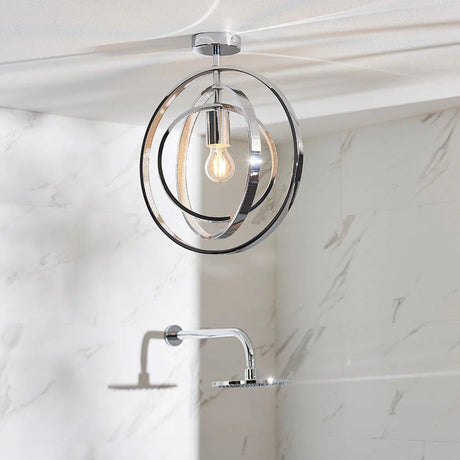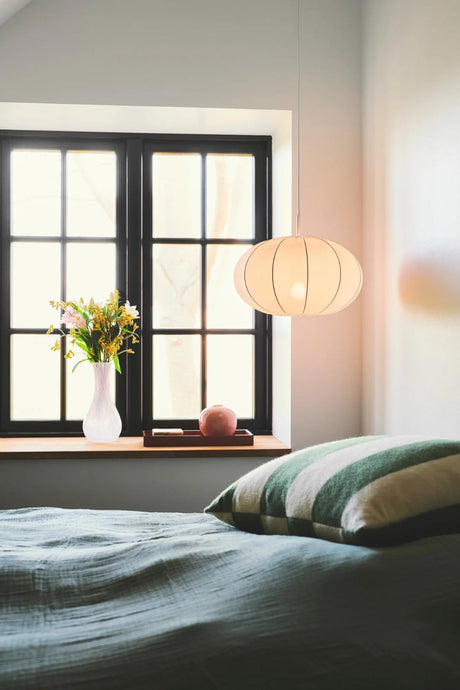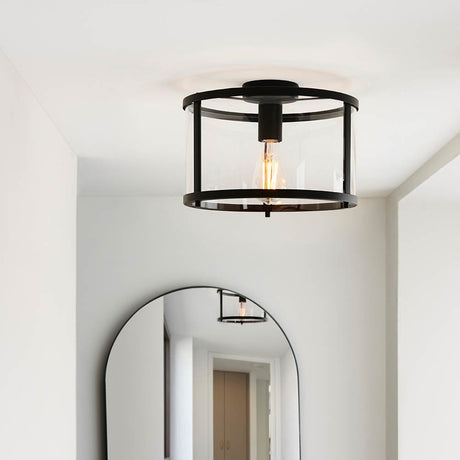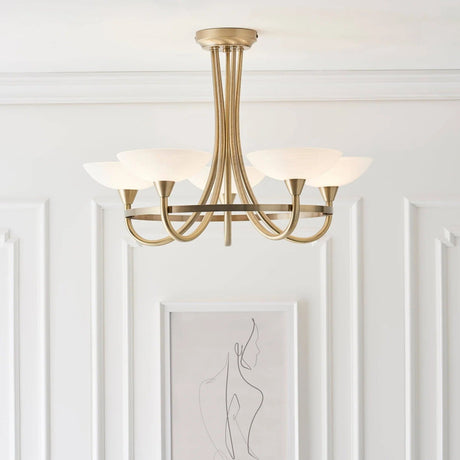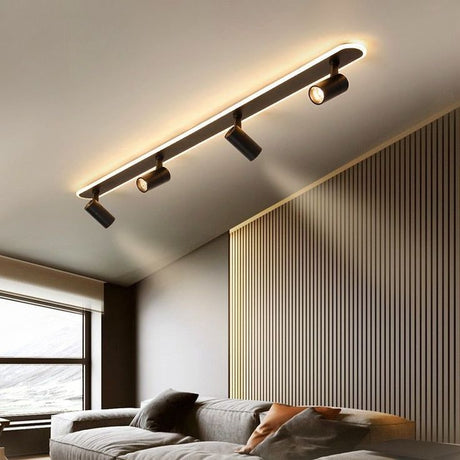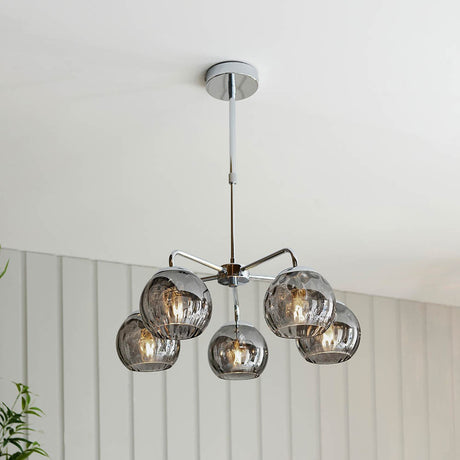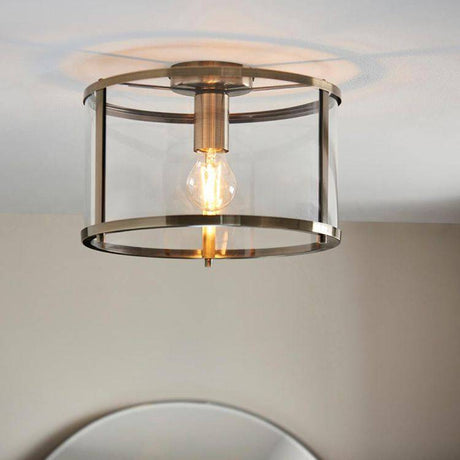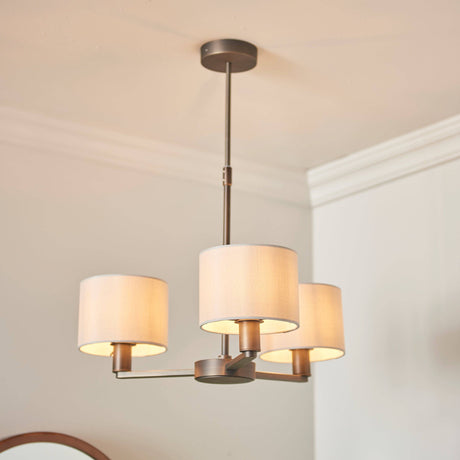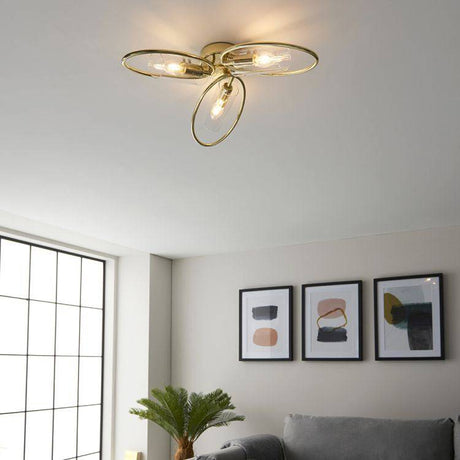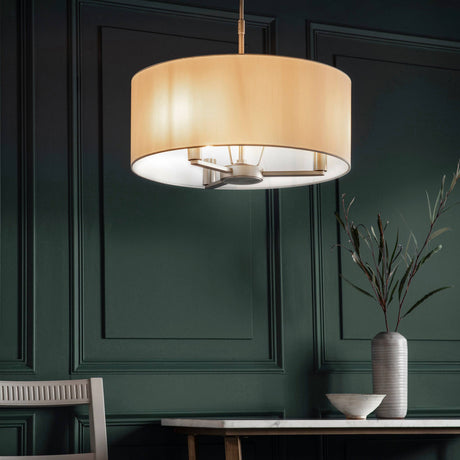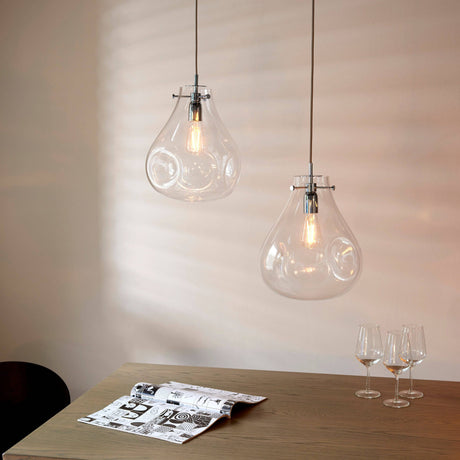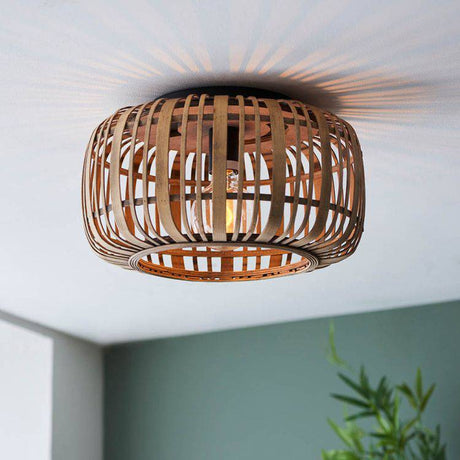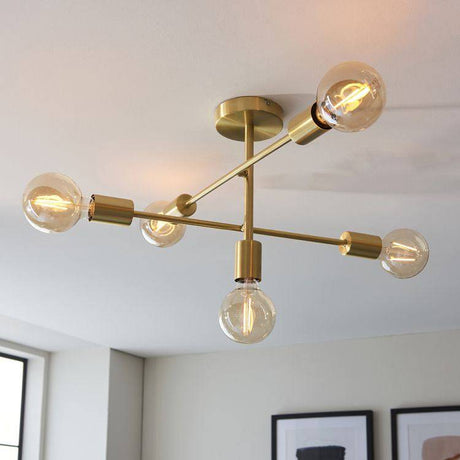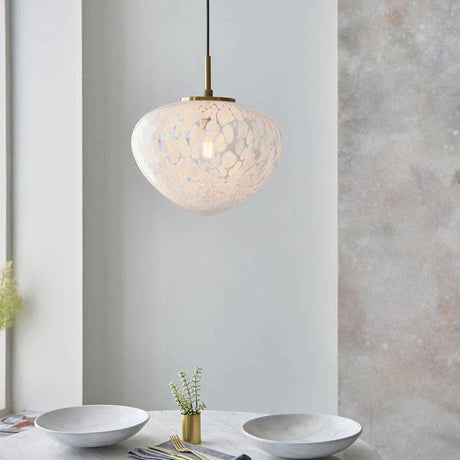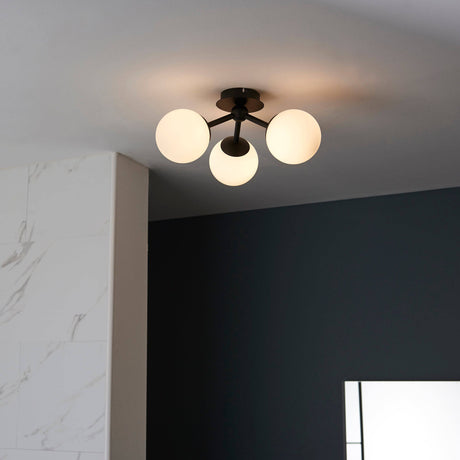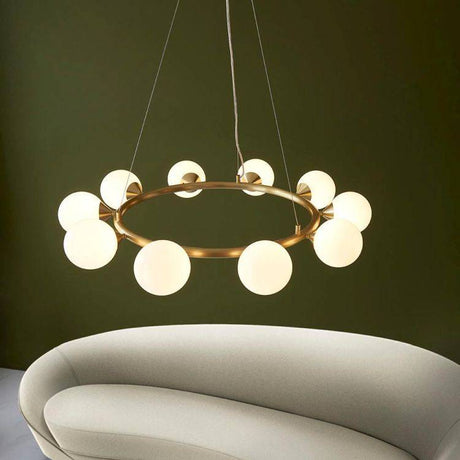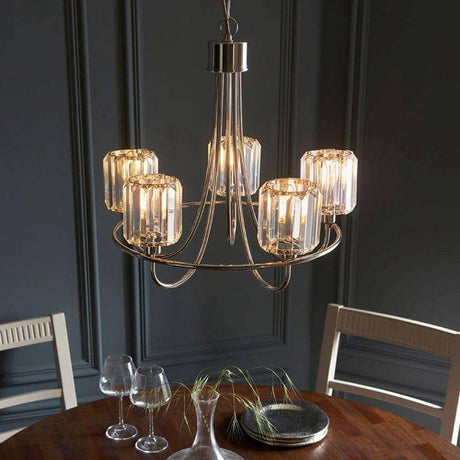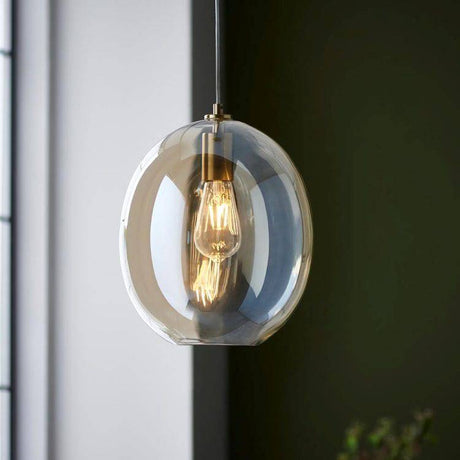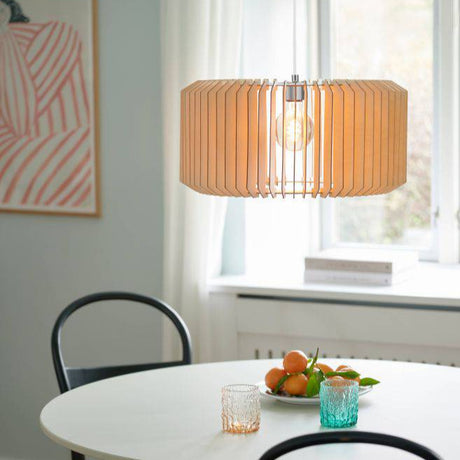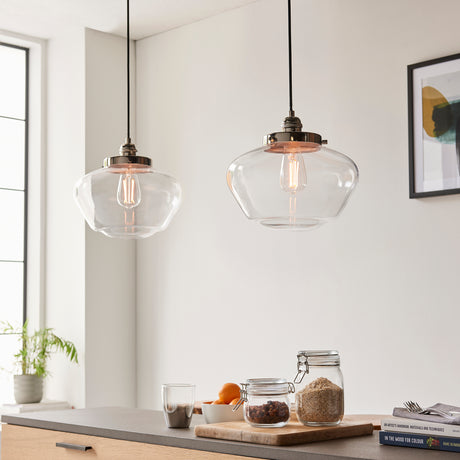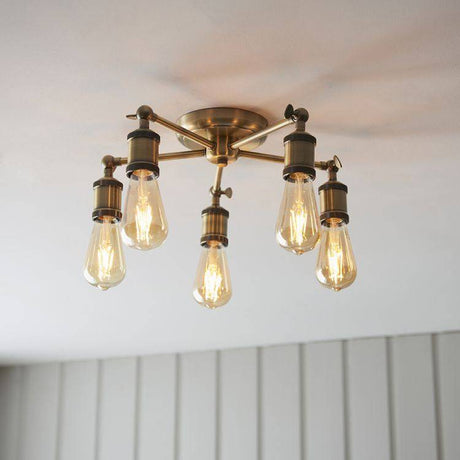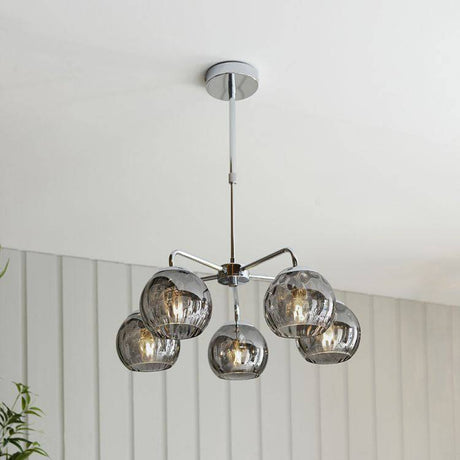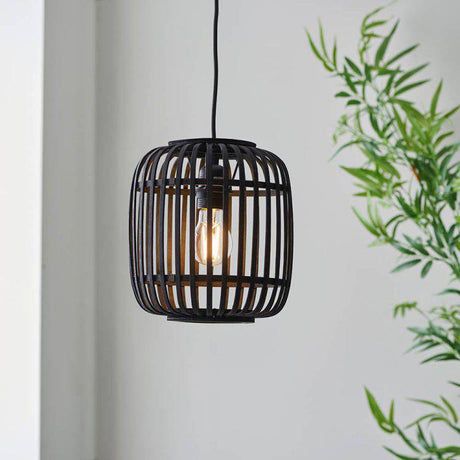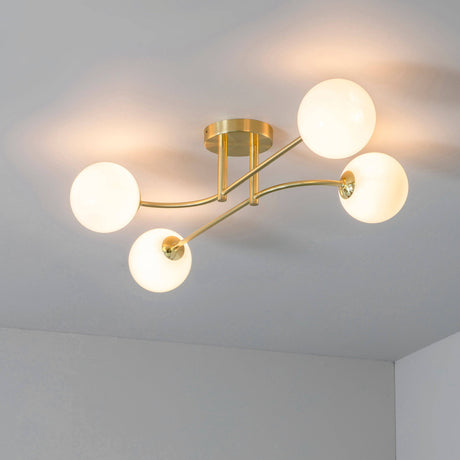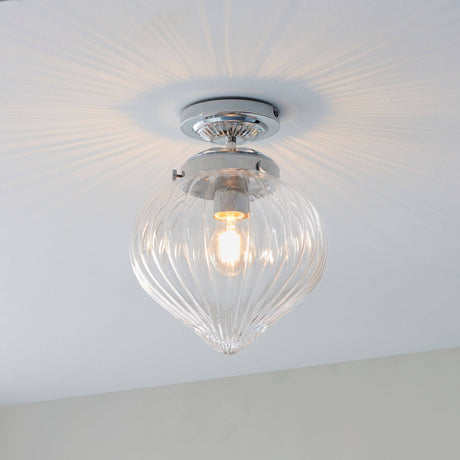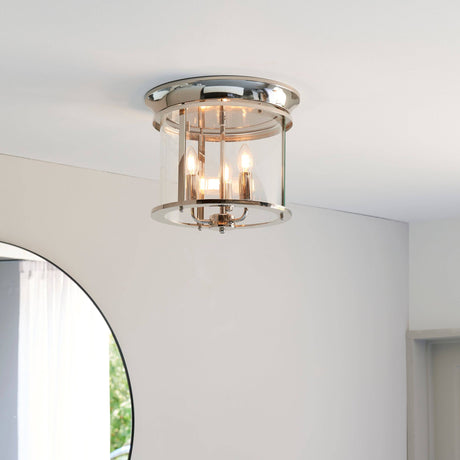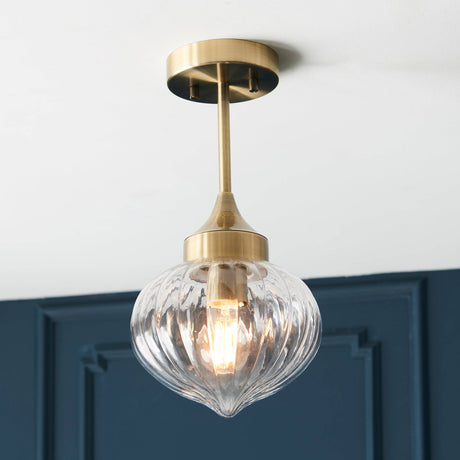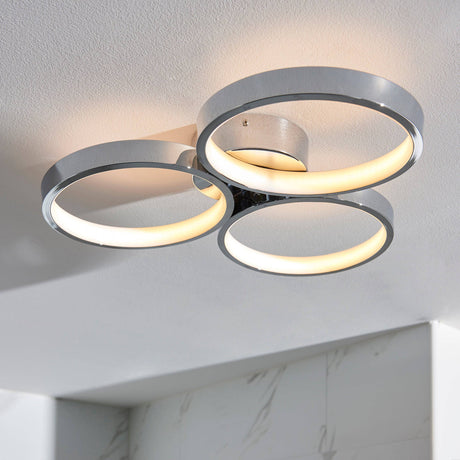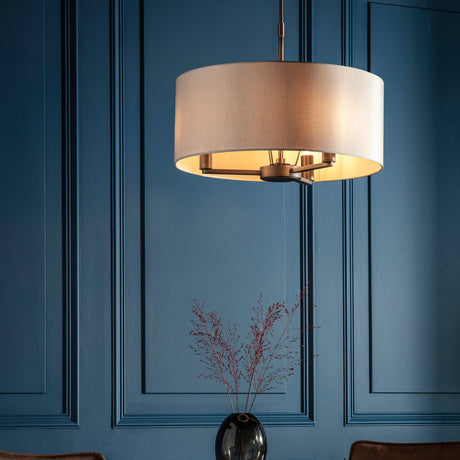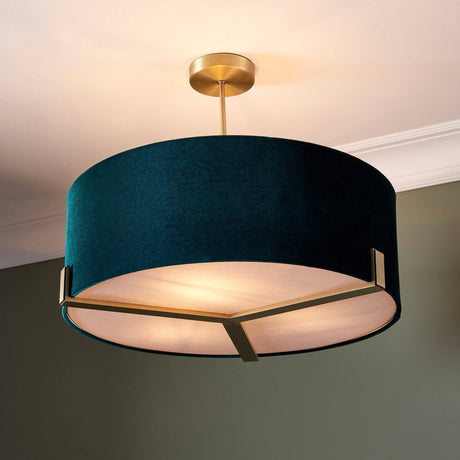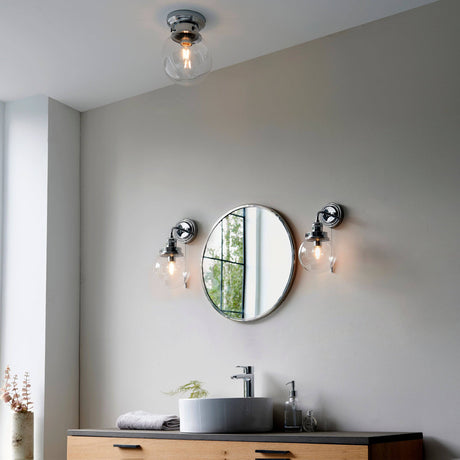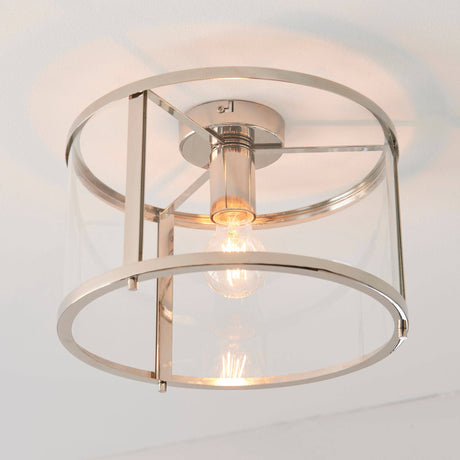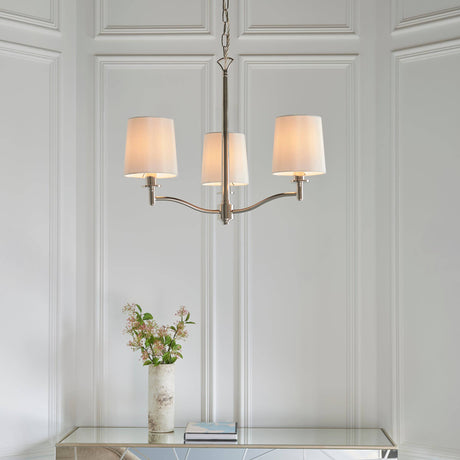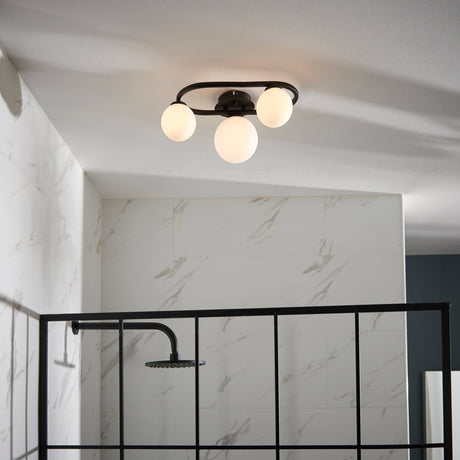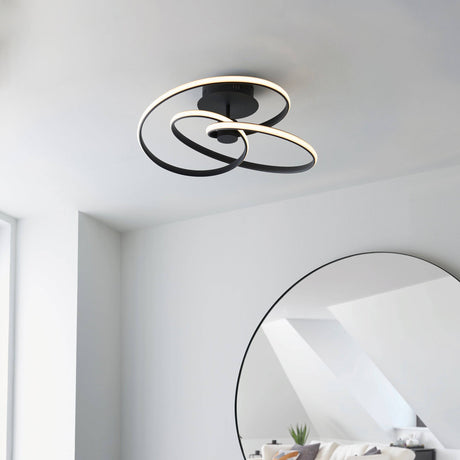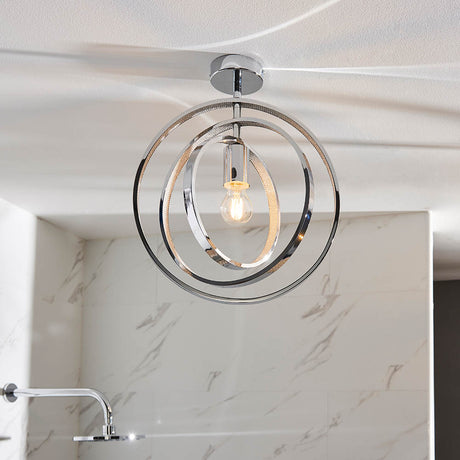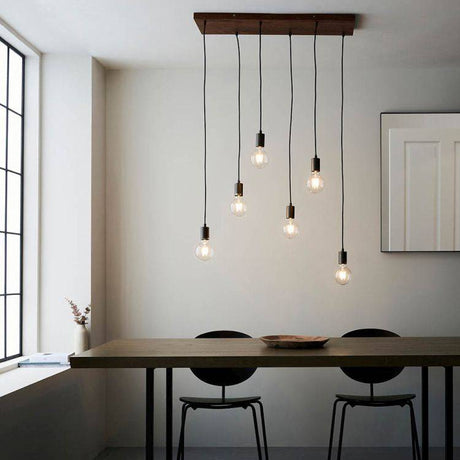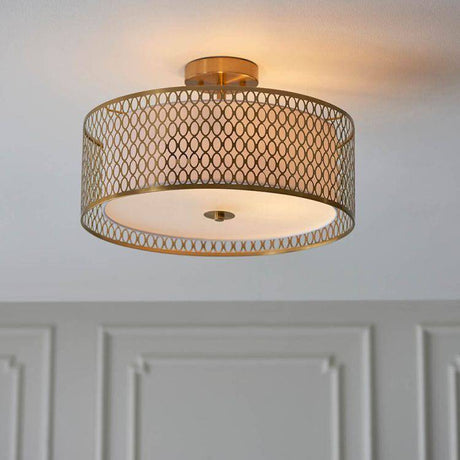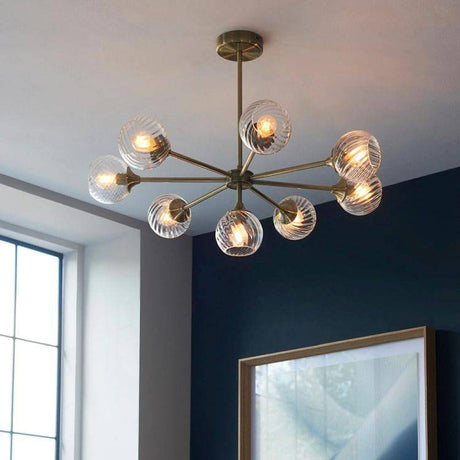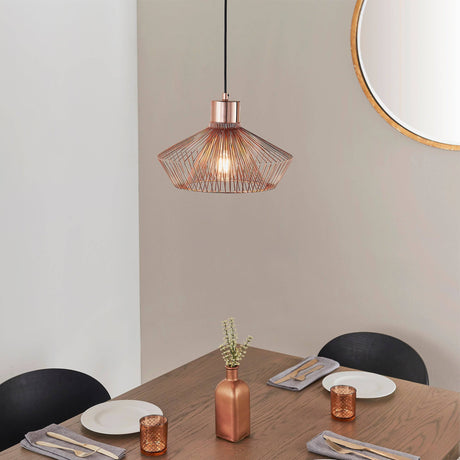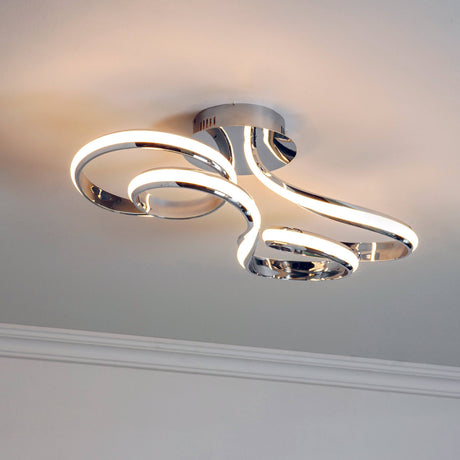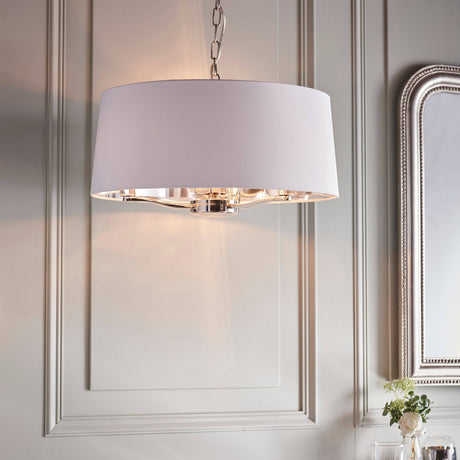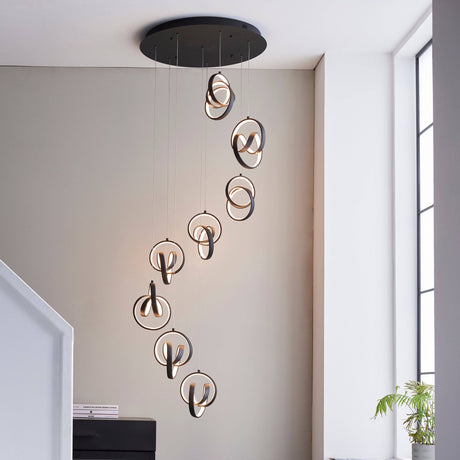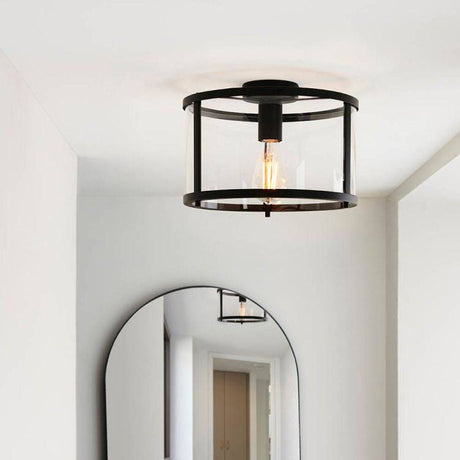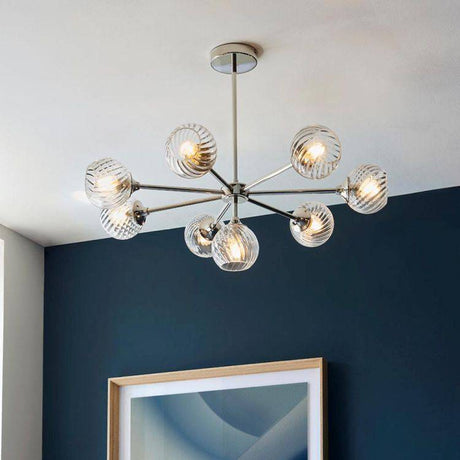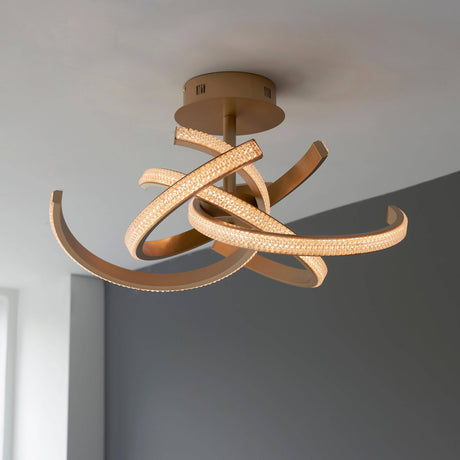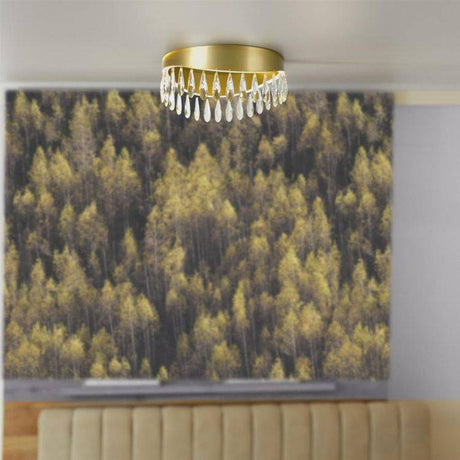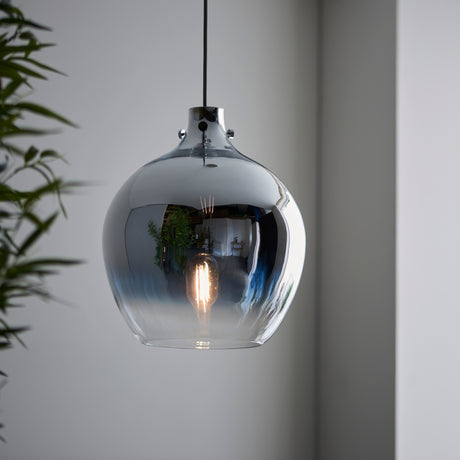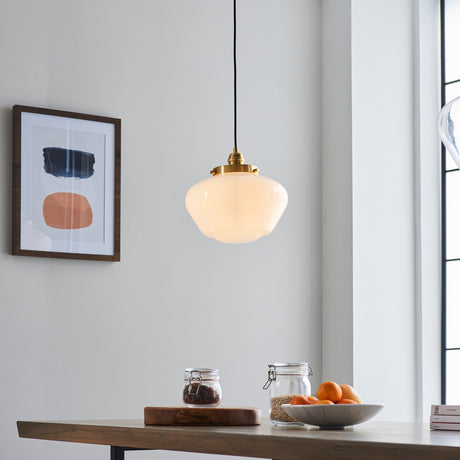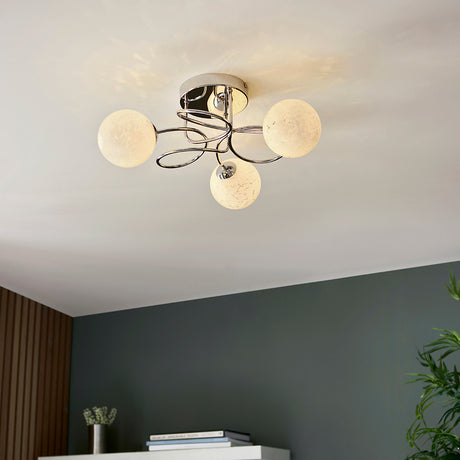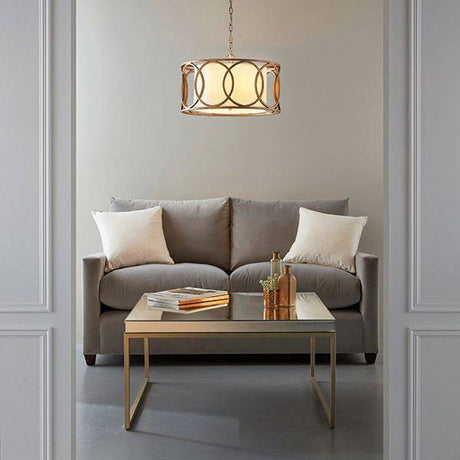Hopton Flush Ceiling Light Antique Brass
Regular price £131.21 Sale price £68.40Unit price /UnavailableDaley 3-Light Pendant Ceiling Light & Marble Shades
Regular price £211.85 Sale price £110.40Unit price /UnavailableAmari 3Lt Semi-Flush Ceiling Light Polished Brass
Regular price £138.49 Sale price £72.19Unit price /UnavailableDaley 3-Light Pendant Ceiling Light & White Shade
Regular price £209.18 Sale price £109.01Unit price /UnavailableRidgeton 3lt Pendant Ceiling Light Antique Brass
Regular price £328.00 Sale price £98.40Unit price /Unavailable- Regular price £203.93 Sale price £106.27Unit price /Unavailable
Mathias Flush Ceiling Light Matt Black - Bamboo
Regular price £104.39 Sale price £54.43Unit price /UnavailableStudio 5Lt Semi-Flush Ceiling Light Brushed Brass
Regular price £122.46 Sale price £63.84Unit price /UnavailableGanges Pendant Ceiling Light Satin Brass
Regular price £154.35 Sale price £118.73Unit price /UnavailablePulsa 3Lt Semi-Flush Ceiling Light A Matt Black
Regular price £109.00 Sale price £56.83Unit price /UnavailableKemi 10Lt Ring Pendant Ceiling Light Brushed Gold w/ Gloss White Glass
Regular price £326.64 Sale price £251.26Unit price /UnavailableBerenice 5lt Pendant Ceiling Light Bright Nickel
Regular price £219.59 Sale price £114.43Unit price /UnavailableFranklin Large Pendant Ceiling Light
Regular price £135.82 Sale price £70.80Unit price /UnavailableAbakan Pendant Ceiling Light Satin Brass
Regular price £92.06 Sale price £70.82Unit price /UnavailableNordlux Asti 50 Pendant Nature
Regular price £93.71 Sale price £78.09Unit price /UnavailableOhio Pendant Ceiling Light Polished Nickel w/ Clear Glass
Regular price £125.18 Sale price £96.29Unit price /UnavailableHal 5Lt Semi-Flush Ceiling Light Antique Brass
Regular price £105.24 Sale price £84.19Unit price /UnavailableDimple 5Lt Pendant Ceiling Light Chrome
Regular price £186.35 Sale price £149.08Unit price /UnavailableMathias Pendant Ceiling Light Matt Black
Regular price £56.92 Sale price £32.40Unit price /UnavailableOtto 4-Light Semi Flush Ceiling Light
Regular price £145.87 Sale price £76.03Unit price /UnavailableCheston Flush Ceiling Light Chrome Plated
Regular price £121.63 Sale price £63.41Unit price /UnavailableHamworth 3Lt Flush Ceiling Light Bright Nickel
Regular price £239.96 Sale price £125.04Unit price /UnavailableAddington Semi-Flush Ceiling Light Antique Brass
Regular price £70.85 Sale price £56.68Unit price /UnavailableRadius 3Lt LED Semi-Flush Ceiling Light Chrome Plated
Regular price £155.45 Sale price £81.02Unit price /UnavailableDaley 3-Light Pendant Ceiling Light & Marble Shade
Regular price £223.74 Sale price £116.59Unit price /UnavailableHayfield 3-Light Pendant Ceiling Light Green Velvet Shade
Regular price £249.55 Sale price £130.03Unit price /UnavailableCheswick Flush Ceiling Light Chrome Plated
Regular price £92.04 Sale price £48.00Unit price /UnavailableHopton Flush Ceiling Light Bright Nickel
Regular price £130.11 Sale price £67.82Unit price /UnavailableOrtona 3Lt Pendant Ceiling Light Bright Nickel w/ White Shades
Regular price £244.11 Sale price £127.20Unit price /UnavailablePulsa 3Lt Semi-Flush Ceiling Light B Matt Black
Regular price £100.71 Sale price £52.51Unit price /UnavailableDune LED Semi-Flush Ceiling Light Black
Regular price £218.76 Sale price £114.00Unit price /UnavailableMerola Semi-Flush Ceiling Light Chrome Plated
Regular price £163.93 Sale price £85.44Unit price /UnavailableStellan 6Lt Pendant Ceiling Light
Regular price £138.95 Sale price £72.43Unit price /UnavailableCordero 3Lt Flush Ceiling Light Gold
Regular price £177.29 Sale price £92.40Unit price /UnavailableAllegra 8lt Pendant Ceiling Light Antique Brass
Regular price £158.04 Sale price £126.43Unit price /UnavailableKimberley 1-Light Pendant Ceiling Light Copper
Regular price £64.12 Sale price £51.30Unit price /Unavailable- Regular price £209.94 Sale price £167.95Unit price /Unavailable
Harvey 3-Light Pendant Ceiling Light Nickel & White Shade
Regular price £223.74 Sale price £116.59Unit price /UnavailableCosma 8Lt LED Multi-Drop Ceiling Light Black
Regular price £522.89 Sale price £274.67Unit price /UnavailableDaley 5-Light Pendant Ceiling Light & White Shades
Regular price £190.25 Sale price £152.20Unit price /UnavailableHopton Flush Ceiling Light Matt Black
Regular price £131.21 Sale price £68.40Unit price /UnavailableAllegra 8lt Pendant Ceiling Light Bright Nickel
Regular price £242.63 Sale price £126.43Unit price /UnavailableLorenzo 4Lt LED Flush Ceiling Light Satin Gold
Regular price £323.37 Sale price £168.48Unit price /UnavailableSearchlight Drum 2 3Lt Flush Ceiling Light - Pink Velvet Shade
Regular price £71.37 Sale price £43.75Unit price /UnavailableSearchlight Jewel LED Flush Ceiling Light - Gold & Crystal
Regular price £177.81 Sale price £111.13Unit price /UnavailablePenobscot Pendant Ceiling Light Chrome
Regular price £198.80 Sale price £152.92Unit price /UnavailableOhio Pendant Ceiling Light Brass Plated w/ Opal Glass
Regular price £128.44 Sale price £98.80Unit price /UnavailableYonne Pendant Ceiling Light Matt Black w/ Grey Tinted Glass
Regular price £169.28 Sale price £130.22Unit price /UnavailableErne 3Lt Semi-Flush Ceiling Light Chrome w/ Confetti Glass
Regular price £93.47 Sale price £71.90Unit price /UnavailableTrent 4Lt Pendant Ceiling Light Brushed Gold Paint & White Fabric
Regular price £285.63 Sale price £219.71Unit price /Unavailable
Frequently Asked Questions
Can ceiling lights be dimmed?
Can ceiling lights be dimmed?
Yes, you can dim the ceiling lights. But for that, you need to use dimmer switches. Another option is to use smart lights. Smart lights allow homeowners to control the level of brightness through an app on their phone. These can also be directed via Google Home and Alexa.
How can I install ceiling lights?
How can I install ceiling lights?
Installation of ceiling lights: Switch off the power supply without fail. Now, remove the old fixture and take it out. Connect wires of the new light to exposed wires in the ceiling. Ensure same coloured wires are connected to each other. Attach the fixture, put back the cover, and turn on the power. However, the best thing to do is to call an electrician and let them handle this task.
What is the ideal brightness of ceiling lights?
What is the ideal brightness of ceiling lights?
There is a lot of flexibility in wattage of ceiling lights. It should ideally depend on the size of the room. In a medium-sized room, the wattage between 60 watts and 100 watts is acceptable.
Is IP safety rating important in ceiling lights?
Is IP safety rating important in ceiling lights?
Yes, the IP rating is important. It should be given due attention when thinking of lights for wet or moist areas, such as the bathroom and the kitchen. The IP rating corresponds to the amount of resistance of the light from damage due to moisture. As such, the higher the rating, the better it is.
How Can I Use Dimmer Switches with Ceiling Lights?
How Can I Use Dimmer Switches with Ceiling Lights?
You can only use dimmer switches on light compatible with them. If your lights are compatible with dimmer switches, do the following - turn off the power and take out the regular wall switch. Replace it with the new dimmer switch, and switch the power back on. Be careful with the wires when connecting them. If possible, let an electrician do it. They are trained for such work.


